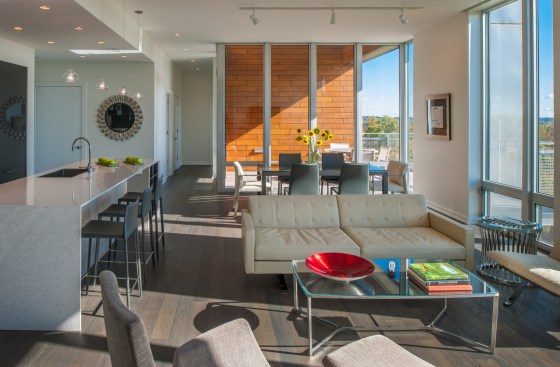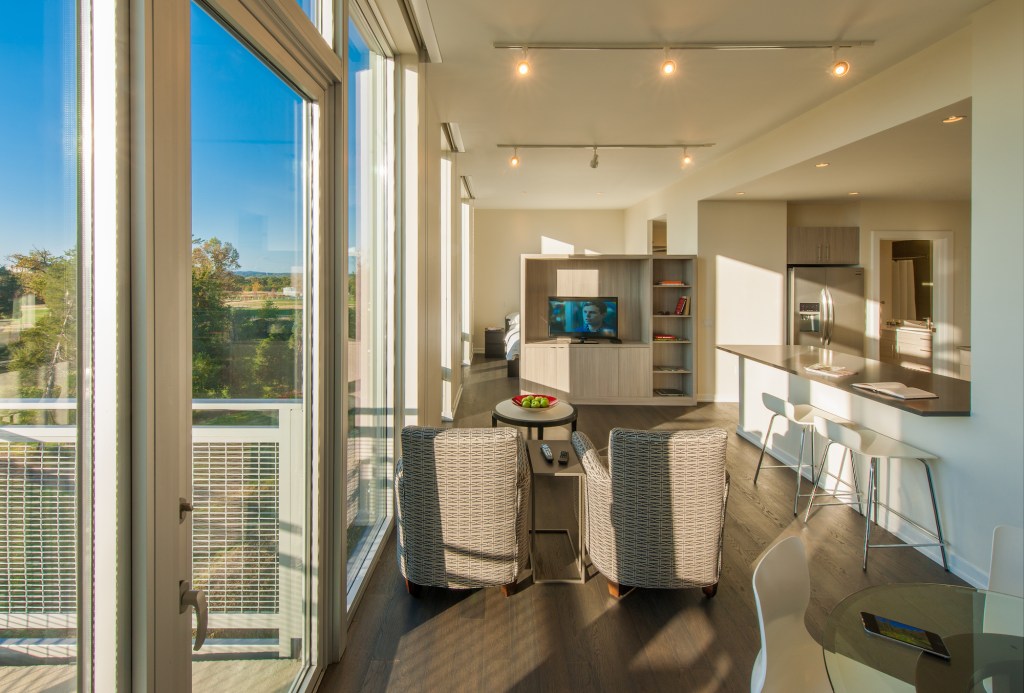WDG Architecture designed residential buildings A, B, and C at the Howard Hughes Medical Institute Janelia Research Campus, an international destination for neurobiology research in Ashburn, Virginia. The three residential designs draw their inspiration from the verdant landscape of Janelia Farm, the neurobiological exploration of the campus, and a commitment to comfort and well-being for residents.
An inherent challenge in the project was the demographics of residents. The design of the buildings had to both provide refuge for visiting fellows and their families from the research work of HHMI and a space to promote cooperation and fraternization. WDG’s goal was to provide living spaces that could serve as homes for researchers to grow while fostering partnerships in a fertile, shared neighborhood.
The units for buildings A, B, and C were designed to be spacious, flexible, and capable of a variety of functions, whether they be contemplative activities or shared, communal activities. Shallower units along the central spine allow more natural light and views with exterior zones and higher ceilings for living and sleeping areas along with interior zones of kitchens, bathrooms, and closets. The more linear units help eliminate “superfluous circulation,” adding more space to both the living and sleeping areas. Balconies to the units provide a quiet, furnished space for visiting researchers.

Maxwell Mackenzie
PROJECT DETAILS
Location: Ashburn, Virginia
Developers: Potomac Development Group and Howard Hughes Medical Institute
Architect and Interior Designer: WDG Architecture
Builder: Whiting-Turner
Opened: June 2021
Number of Units: 247
Unit Mix: One- and two-bedrooms
Rents: N/A
Many of the units are flexible, with subdivisional dens and casement work that allow for creative uses of the space. Ample storage allows family units to grow and change over time, while kitchens are designed with peninsulas with built-in shelving for increased options for food preparation and hosting.
A slot window was added to the wall between the bedroom and living room, allowing the façade to flow past the partition to promote open flow while still maintaining privacy between the two rooms. A full-height door is used between the living room and bedroom to create a seamless flow of space when the door is open. The bathrooms, however, are more compartmentalized with sliding panels for a more nuanced overall space.
Since HHMI typically has medium- and long-term residents, finishes and materials were chosen for their resiliency and durability. The cabinetry finishes were chosen to invoke the natural setting of Janelia Farm, while other finishes were selected to contrast between the sterile HHMI labs.
